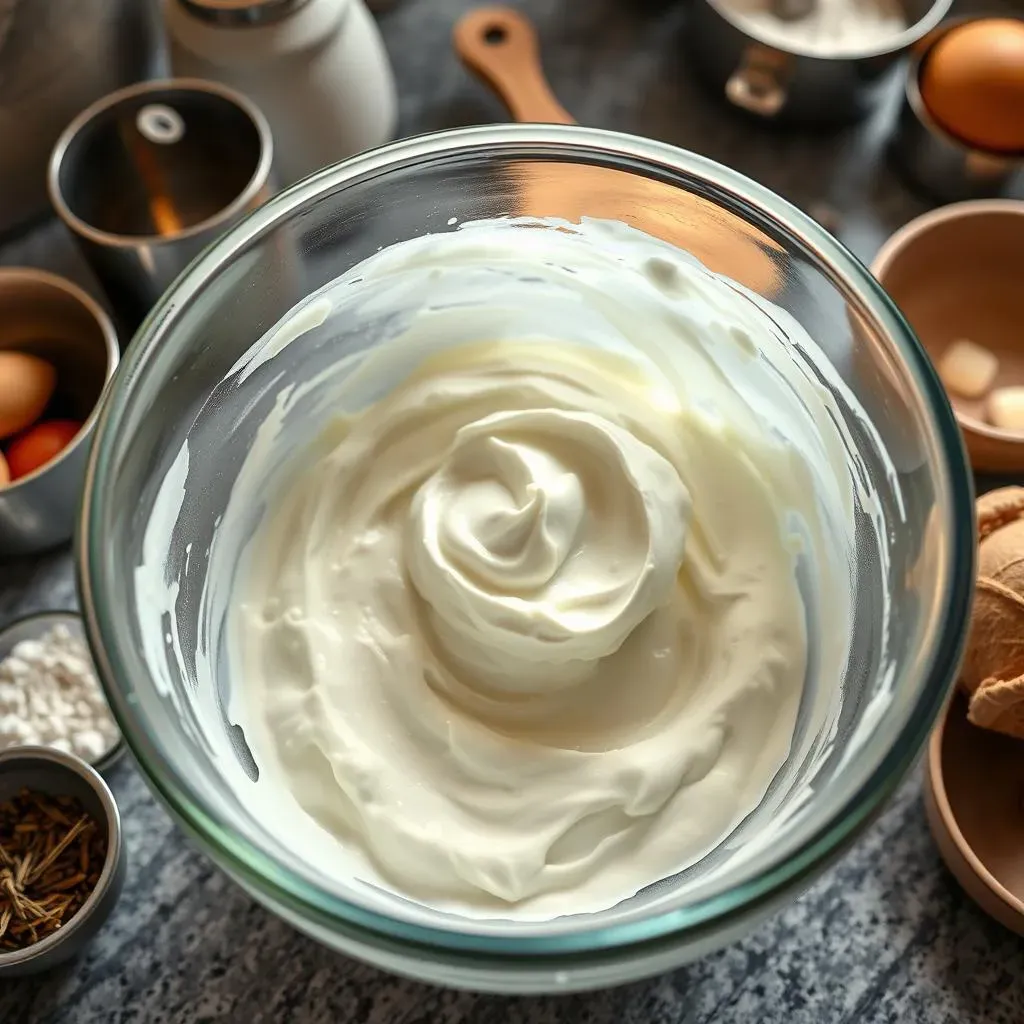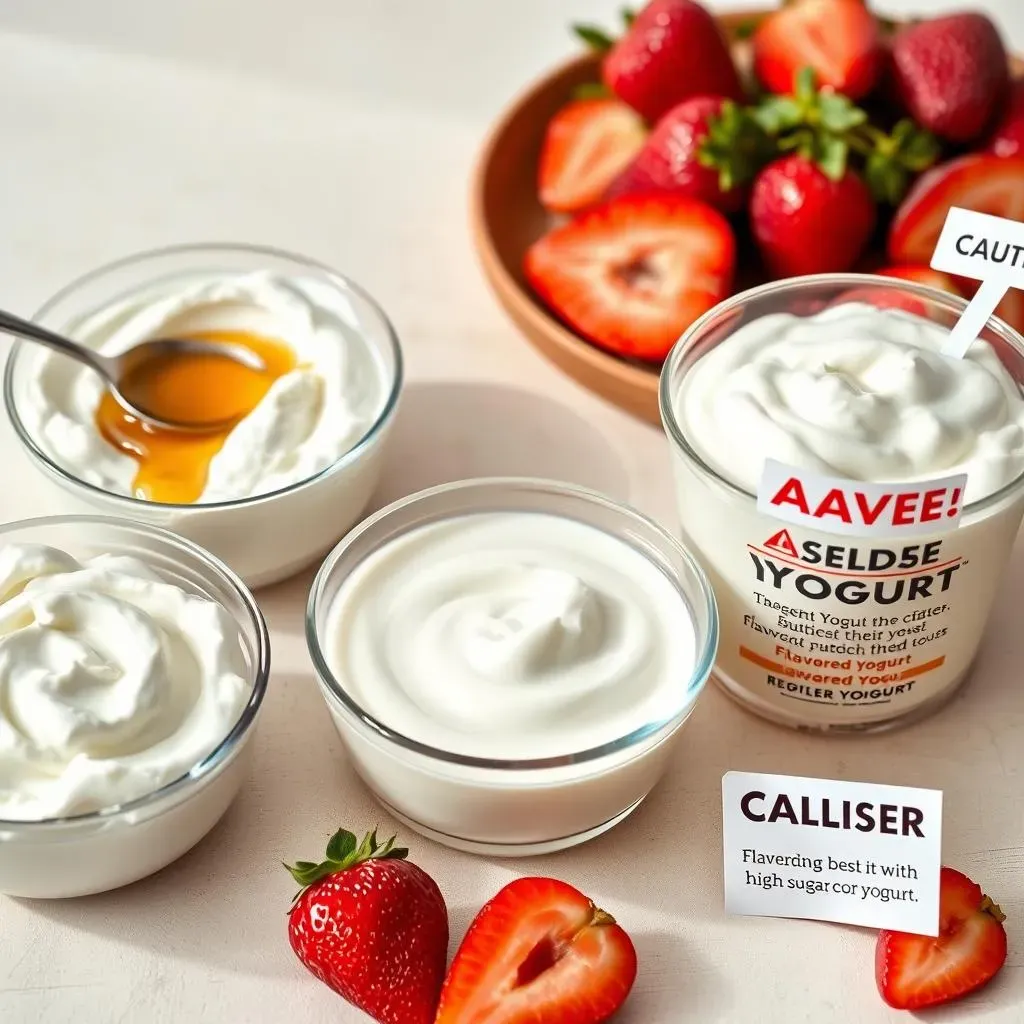Table of Contents
Ever found yourself mid-recipe, staring into the fridge, only to discover you're out of sour cream? It's a kitchen crisis we've all faced. But don't panic! A simple tub of yogurt might just be your culinary superhero. The big question is: can you substitute yogurt for sour cream in a recipe? The short answer is a resounding yes, but there's a bit more to it than just a straight swap. This article will be your guide through the creamy world of yogurt substitutions. We'll explore the best types of yogurt for different uses, how to adjust your recipes, and what to watch out for. We’ll cover the basics, get into the nitty-gritty of different yogurts and their impact on your dishes, and provide practical tips to make sure your substitutions are always a success. Let's get cooking and see how yogurt can save the day!
Can You Substitute Yogurt for Sour Cream? Understanding the Basics

Can You Substitute Yogurt for Sour Cream? Understanding the Basics
The Great Dairy Dilemma
So, you're staring at a recipe calling for sour cream, and all you've got is yogurt. I've been there, trust me. The good news is, they’re not as different as you might think. Both are tangy dairy products, but their textures and fat contents differ. Sour cream is richer, with that signature thick, luxurious feel. Yogurt, on the other hand, can range from thin and runny to thick and creamy, depending on the type. This difference is key, but it's not a deal-breaker for most recipes. Think of it like swapping out a heavy wool coat for a lighter fleece – they both provide warmth, but one's heavier than the other.
Why Yogurt Works (Most of the Time)
The magic lies in the acidity. Both sour cream and yogurt have that characteristic tang, thanks to lactic acid. This means yogurt can often mimic the flavor profile of sour cream, particularly in recipes where that tang is important. Think dips, sauces, and baked goods. However, the fat content can affect the final texture. Sour cream's higher fat makes it richer and less likely to curdle when heated. Yogurt, especially low-fat versions, can sometimes separate or become watery. But, with a few simple tweaks, you can usually avoid this problem. It’s like adjusting the amount of water when you're making a sauce – a little tweak can make all the difference.
Feature | Sour Cream | Yogurt |
|---|---|---|
Fat Content | High | Variable (low to high) |
Texture | Thick, Rich | Variable (thin to thick) |
Acidity | Tangy | Tangy |
Choosing Your Yogurt Wisely
Not all yogurts are created equal. For the best sour cream substitution, go for plain, full-fat Greek yogurt. Its thick texture and creamy consistency make it the closest match to sour cream. Avoid nonfat or low-fat yogurts, as they tend to be thinner and more likely to separate in cooking. Also, make sure it’s unsweetened, unless you’re aiming for a sweet twist in your dish. It’s like choosing the right type of paint for a project – using the wrong one could mean more work later. So, a little attention to detail here can make your substitution a success.
Yogurt Varieties and Their Impact on Recipes

Yogurt Varieties and Their Impact on Recipes
Greek Yogurt: The Thick and Creamy Champion
Let's talk Greek yogurt. It’s the workhorse of yogurt substitutions, and for good reason. It's strained to remove most of the whey, giving it that super thick, almost sour cream-like texture. This makes it fantastic in dips, sauces, and as a topping. It’s also a star in baking, adding moisture and a subtle tang to cakes and muffins. Think of it as the Swiss Army knife of yogurts – versatile and always reliable. But remember, not all Greek yogurt is created equal. Full-fat versions are the closest to sour cream, while low-fat or nonfat can be a bit too watery. So choose wisely.
Regular Yogurt: A Lighter Option
Regular yogurt is more common and readily available, but it’s not always the best substitute. It has a thinner consistency compared to Greek yogurt, so you might need to adjust your recipes to compensate. If you’re using it in a dip or sauce, you might need to add a thickening agent like cornstarch or a little bit of gelatin. In baking, it can work, but it might make your final product a bit more moist. Regular yogurt is like that pair of comfy sneakers you wear every day – reliable, but maybe not the best choice for a fancy occasion. So, it can work, but it might need a bit of help to shine.
Yogurt Type | Texture | Best Uses | Considerations |
|---|---|---|---|
Greek Yogurt | Thick, creamy | Dips, sauces, baking, toppings | Full-fat is best for substitution |
Regular Yogurt | Thinner | Dips, sauces, baking | May need thickening |
Non-Fat/Low-Fat Yogurt | Thin, watery | Smoothies, marinades | Not ideal for direct substitution |
Other Yogurt Options: When to Avoid
While Greek and regular yogurt can be good substitutes, other types of yogurt aren't so great for swapping with sour cream. Flavored yogurts, for example, are usually packed with sugar and artificial flavors that can throw off the taste of your recipe. Similarly, nonfat or low-fat yogurts are too watery and can lead to a runny mess, especially in heated dishes. It's like trying to use a screwdriver to hammer a nail – not the right tool for the job. So, stick to plain, unsweetened yogurt, preferably Greek, for the best results. Remember, your recipes will thank you for it!
When to Swap: Practical Tips for Using Yogurt Instead of Sour Cream

When to Swap: Practical Tips for Using Yogurt Instead of Sour Cream
Baking Bliss: Yogurt in Cakes and Muffins
Okay, let's talk baking. This is where yogurt really shines as a sour cream substitute. When a recipe calls for sour cream in a cake or muffin, Greek yogurt is your best bet. It adds moisture and a lovely tang, without making the batter too runny. Just remember, full-fat Greek yogurt will give you the closest results to sour cream. If you're using regular yogurt, you might want to reduce the amount of liquid in the recipe slightly, to avoid a soggy mess. It’s like adjusting the sugar in a recipe – a little tweak can make all the difference. Think of it as a secret weapon to creating moist and delicious baked goods.
Another thing to consider is the temperature. If your recipe calls for melted butter, you might need to warm the yogurt slightly before adding it, especially if it’s straight from the fridge. This will help it blend more smoothly into the batter. It’s all about mimicking the consistency of sour cream, which is already at room temperature when you're baking. If you're making a cake that needs a little lift, you can add a pinch of baking soda to help the yogurt react and create a lighter texture. It’s a small detail, but it can have a big impact on the final result.
Recipe Type | Yogurt Type | Adjustment |
|---|---|---|
Cakes | Full-fat Greek yogurt | Warm slightly if needed |
Muffins | Full-fat Greek yogurt or Regular yogurt | Reduce other liquids slightly with regular yogurt |
Quick Breads | Full-fat Greek yogurt | None |
Savory Sensations: Yogurt in Dips and Sauces
Now let's move on to the savory side. Yogurt is fantastic in dips and sauces. It brings that tangy flavor that sour cream is known for, but with a slightly lighter feel. For dips, Greek yogurt is ideal because of its thickness. If you're using regular yogurt, you might want to strain it for a bit to get rid of some of the excess liquid, or add a thickener like cornstarch. When making sauces, yogurt can sometimes curdle if added directly to a hot pan. To avoid this, mix a bit of the hot sauce into the yogurt, let it warm up gradually, and then add the mixture back into the pan. It’s all about temperature control, like when you're tempering chocolate – a gradual process makes all the difference.
Also, remember that yogurt can add a bit of a different texture to a sauce, so don't be afraid to experiment. Sometimes a little extra olive oil can help make it smoother, or a squeeze of lemon juice can enhance the tang. It’s all about finding the right balance of flavors and textures. Think of it as a chance to put your own spin on a classic recipe. Don't be afraid to taste as you go and adjust the seasonings to your liking. It’s your kitchen, after all!
- Dips: Use Greek yogurt for thickness. Strain regular yogurt if needed.
- Sauces: Temper yogurt with hot sauce before adding to the pan.
- Dressings: Yogurt adds a nice tang. Adjust seasonings to taste.
The Finishing Touch: Toppings and More
Yogurt isn't just for mixing into recipes. It also makes a fantastic topping. A dollop of Greek yogurt on a baked potato or a bowl of chili can add a creamy, tangy finish. It’s a lighter and healthier alternative to sour cream, but still delivers that rich flavor. For toppings, you can use either Greek or regular yogurt, depending on your preference. Just keep in mind that regular yogurt might be a bit runnier, so it's better for dishes that don't need a lot of structure. Think of it like choosing the right garnish for a dish – it's all about adding that extra layer of flavor and presentation. It’s the little things that can take your dish from good to great.
And don't forget about using yogurt as a marinade. Its acidity can help tenderize meat and add a nice flavor. It's particularly good with chicken and lamb, making it a versatile ingredient in your kitchen. So, next time you're looking for a way to add a little zing to your dishes, reach for that tub of yogurt. It's not just a substitute; it's a secret weapon for delicious meals.